 |  |  |
| Romanian Army in the Second World War · Forum Guidelines |
 Help Help
 Search Search
 Members Members
 Calendar Calendar
|
| Welcome Guest ( Log In | Register ) | Resend Validation Email |
   |
| ANDREAS |
Posted: February 27, 2011 04:49 pm
|
||
|
Locotenent colonel Group: Members Posts: 814 Member No.: 2421 Joined: March 15, 2009 |
Because I recently read about the battle of Gisel (near Vladikavkaz) in november 1942 where the 13 and 23. Panzer Divisions had been badly hit (lost 2/3 or their armor) by the soviet forces, leading to the halt of german offensive in North Caucasus, and the rescue operations conducted by 2nd Mountain Division (WorldWar2.ro) of SS-Division Wiking (source -Krieg der Panzer 1939-1945 -Janusz Piekalkiewicz pg.189) I wonder which one is closer to the truth, or better, are they both true? Waiting for your answer! |
||
| ANDREAS |
Posted: February 27, 2011 05:03 pm
|
|
Locotenent colonel Group: Members Posts: 814 Member No.: 2421 Joined: March 15, 2009 |
Because my english is too often hard to understand, I repeat my question : was the romanian contribution really important in this battle, or the decisive one was that of the german SS Division "Wiking"? The Axis forces mentioned as remaining in the area in end november-early december 1942 were the german 3. Panzer Division, 111, 50 and 370 Infantry Divisions, 13 Panzer Division, SS PzGren Division "Wiking" and the romanian 2nd Mountain Division.
|
| aidan zea |
Posted: September 07, 2012 08:34 pm
|
||
|
Caporal Group: Members Posts: 102 Member No.: 3341 Joined: July 04, 2012 |
I found this material on the Internet in this website: http://www.theeasternfront.co.uk/battles/battlescaucasus.htm |
||
| ionionescu |
Posted: September 10, 2012 09:22 am
|
||
|
Plutonier major Group: Members Posts: 345 Member No.: 2794 Joined: April 26, 2010 |
Both German and Romanian counter attacks were important in their relief attempt, maybe elements of SS Division ”Viking” helped 23. Panzer Division in their successful counterattack to the North in the afternoon of 10 November, because in his memoirs ”Divizia de Cremene” general Ion Dumitrache doesn't mention any help in the romanian 4th Mountain Group (7th and 8th Mountain Battalions) successful counterattack to the South-East.  free image hosting |
||
| ANDREAS |
Posted: September 14, 2012 11:28 pm
|
|
Locotenent colonel Group: Members Posts: 814 Member No.: 2421 Joined: March 15, 2009 |
Thank you very much ionionescu! Your help is greatly appreciated!
|
| Florin |
Posted: September 15, 2012 02:02 am
|
|
General de corp de armata Group: Members Posts: 1879 Member No.: 17 Joined: June 22, 2003 |
If the German-Romanian attack would reach the oil fields and the refineries, they would find just scorched earth and destroyed industrial equipment. I cannot estimate how long it would take to make those oil refineries working again.
There was an engineer overseeing all mining operations. Stalin called him in his office, and after inviting him to sit down and asking him if he want to smoke or to drink, Stalin said: "If you'll blow up the equipment too early, I will shoot you. If they will capture the equipment intact, I will also shoot you." Giving interviews after 1990's, the engineer (now an old man) mentioned that he did not blame Stalin for that, because he would do the same in his place. P.S.: In the fights taking place in the area around Caucasus Mountains, alongside the Germans and Romanians were also some Slovaks and Italians. There were some separate units of Austrians, but I consider them as German troops. The Austrians planted the swastika flag on Elbrus peak on August 23, 1942 (I am not 100% sure about day). It was an unofficial (not ordered) action, so Hitler was a bit surprised and not quite pleased when he heard about it. P.P.S: My grandfather was in the 15th Mountain Battalion - I see in the photocopy shown above that they behaved very well... This post has been edited by Florin on September 15, 2012 02:16 am |
| ANDREAS |
Posted: September 15, 2012 12:32 pm
|
||
|
Locotenent colonel Group: Members Posts: 814 Member No.: 2421 Joined: March 15, 2009 |
Florin, in order to be honest Hitler had no reason to be pleased by this action (the conquest of Elbrus peak) as long as German offensive objectives in the Caucasus were the oil fields near Baku! It's a prestigious action for the german (austrian) gebirgsjagers which doesn't be made instead of reaching the planned objectives! No doubt it's also Hitler's fault as long as he has set the objectives to achieve disregarding the means (troops, combat equipment, a.o.) at his disposal! |
||
| contras |
Posted: September 19, 2012 06:38 pm
|
||
|
Maior Group: Members Posts: 732 Member No.: 2693 Joined: December 28, 2009 |
True, the conquest of Elbrus peak was no doubt just a propagandistic move! |
||
| contras |
Posted: September 24, 2012 08:22 am
|
||
|
Maior Group: Members Posts: 732 Member No.: 2693 Joined: December 28, 2009 |
Dumitru Teodorescu, then commander of 1st Company from 7 Bat, 2nd Romanian Mountain Division mentioned in his memories (Memorii de război, editura Rasunetul, Bistrita, 1997) that Bat 7 rescued German units who were surrounded. His company crossed some marshes and the river Ardan on ice to outflank the enemy, the rest of battalion advanced on road (12 november). The Soviets were totally surprised and retreated to Mairamadag, Romanian Mountain troops reached and fixed the enemy, and during the night German armoured troops retreated by the gap created into Soviet positions. Teodorescu mentioned that Germans waved their hands to Romanians, thanked them for their resue. |
||
| Petre |
Posted: September 01, 2016 07:37 am
|
|
Locotenent colonel Group: Members Posts: 894 Member No.: 2434 Joined: March 24, 2009 |
Source, rus. Net :
Documents from Rus. UFSB Archive, reflecting real events related to the german offensive in Northen Caucasus, autumn 1942 and their attempts to conquer the North Ossetian capital Ordzhonikidze (Dzaudzhikau / Vladikavkaz). În urma luptelor din 7 nov în raionul de la sud-vest Ghizel a fost izolată şi blocată o grupare germană de 4 mii soldaţi şi ofiţeri şi cca. 150 tancuri. Cercetarea a confirmat că în sprijinul grupării blocate în raionul Ghizel vine o divizie română. În ziua de 7 nov 1942 aviaţia germană cu 15 bombardiere a bombardat fără succes unităţile noastre care atacă. Din noiembrie aviaţia germană a executat raiduri masive asupra raionului staţiei Beslan. ... la 11 nov în satul Rassvet a fost încartiruit un batalion de infanterie inamic, cu echipament de iarnă. La periferia vestică au fost amplasate 20 tancuri grele, cca. 20 tunuri calibre diferite şi 30-40 maşini. La 12 nov în satul Cikola se aflau 7 tancuri mijlocii, câteva aruncătoare sextuple şi cca două batalioane de infanterie. În satul Haznidon staţionau două batalioane române, în satul Surh-Digora un escadron de cavalerie. ... la 12 nov în satul Kodahdjin a venit un batalion român în sprijin, care are două tancuri uşoare şi câteva aruncătoare. Tancurile s-au strâns în mijlocul satului. ... la est sat Kodahdjin a fost observată linia de apărare a trupelor române, care ţine de la pantele muntelui la şoseaua spre Alaghir. La vest de sat, la cca. 300 m este o baterie, care execută foc spre satul Mairamadag. La marginea de vest sat Kodahdjin observate 5 tancuri. În cursul 16-17 nov. cercetarea noastră şi a armatei au stabilit următoarele : în satele Rassvet, Kodahdjin, Dzuarikau, Hataldon se apără Div. 2 română vânători de munte, care pentru perioada luptelor are pierderi până la 50% efective. Satele Nogkau, Sudag, Salugardan şi oraşul Alaghir le apărp Divizia 1 munte bavareză, care dispune de 30 tancuri. Satele Ardon şi Kadgaron le apără Reg.128 moto, Batal.78 moto, Batal.23 motociclişti şi cca. 50 tancuri din Div.23 Panzer. Din aceleaşi date, rămăşiţele grupării inamice de la Ghizel s-au unit cu Div. 2 rom. VM şi cu gruparea Arhonskaia. Gruparea înfiinţată are ca misiune să rupă apărarea noastră în raionul staţiei Arhonskaia şi o ofensivă asupra oraşului Ordjonikidze. 19 nov. 1942 În ultimele zile în rândul soldaţilor din trupele inamicului se observă o îngrijorare însemnată. Soldaţii evită să iasă din adăposturi. De partea soldaţilor români se observă unele scuzări în faţa cetăţenilor. Aşa de exemplu în satul Kodahdjin soldaţii şi chiar ofiţerii români declară : «Noi nu vrem să le fim duşmani ruşilor : nemţii sunt duşmanii voştri şi ai noştri». Aceste declaraţii reflectă declinul stării morale în rândul românilor, stârnit de veştile privind succesele trupelor noastre pe frontul Stalingradului. Neavând încredere în romani, comandamentul german a transferat în Osetia trupe SS. … În satul Sudag s-au amplasat 100 tancuri şi blindate purtând desene cu turnul Eiffel şi cap de urs. This post has been edited by Petre on September 01, 2016 07:39 am |
| ionionescu |
Posted: September 03, 2016 04:44 pm
|
|
Plutonier major Group: Members Posts: 345 Member No.: 2794 Joined: April 26, 2010 |
Eiffel tower emblem = 339 Inf Division.
Many emblems with bears but not just the head (AFAIK) |
| Petre |
Posted: September 04, 2016 07:39 am
|
|
Locotenent colonel Group: Members Posts: 894 Member No.: 2434 Joined: March 24, 2009 |
|
| Florin |
Posted: September 04, 2016 01:45 pm
|
||
|
General de corp de armata Group: Members Posts: 1879 Member No.: 17 Joined: June 22, 2003 |
Looking through your link and through others starting from it, it seems that the 23rd Panzerdivision was rather involved near Stalingrad, not in Caucasus, toward the end of 1942. Unless it was moved fast from one place to another (something that I could not notice in those links). This post has been edited by Florin on September 04, 2016 01:47 pm |
||
| Petre |
Posted: September 04, 2016 05:14 pm
|
|
Locotenent colonel Group: Members Posts: 894 Member No.: 2434 Joined: March 24, 2009 |
Yes, it is right : 23.Panzer Division, spitzname - Eiffelturm-Division (nickname - Eiffel Tower Division)
For 23.PD in Caucasus, we can see previous post no.3 and no.4. |
| bearn |
Posted: September 14, 2019 10:10 am
|
|
Soldat Group: Members Posts: 1 Member No.: 4327 Joined: September 14, 2019 |
On the Romanian position near Kodahdjin in 2011
https://reibert.info/threads/nemnogo-pokopa...3/#post-2095721  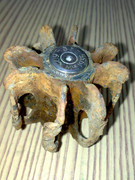 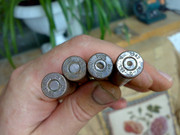 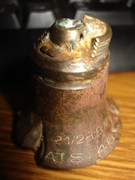 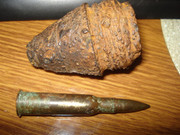  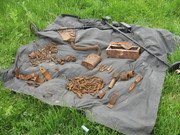 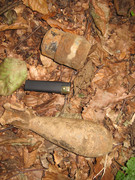 |
0 User(s) are reading this topic (0 Guests and 0 Anonymous Users)
0 Members:
 |
   |
[ Script Execution time: 0.0322 ] [ 14 queries used ] [ GZIP Enabled ]
Powered by Invision Power Board(U) v1.3.1 Final © 2003 IPS, Inc.






